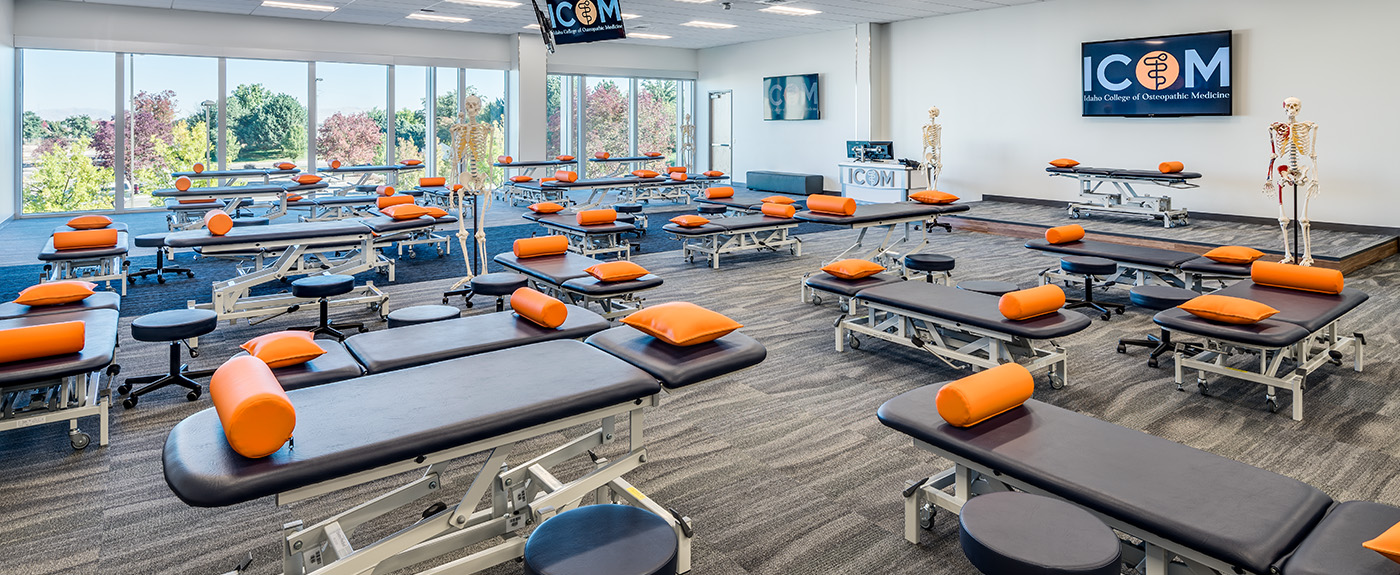The Osteopathic Manipulative Medicine (OMM) Lab, located on the second floor, is the key component in the training of all osteopathic physicians. Here, students will learn the art of physical examination and will develop their palpatory skills which are useful in assisting with the diagnosis of a patient’s medical condition, as well as treating their musculoskeletal dysfunction.
The OMM Lab accommodates 40 hydraulic tables for students to learn the techniques of manipulation in a room with an abundance of bright, natural light from the north wall, which is comprised of floor-to-ceiling windows. Seven high-definition monitors and multiple cameras allow students to view the instruction throughout the room.
